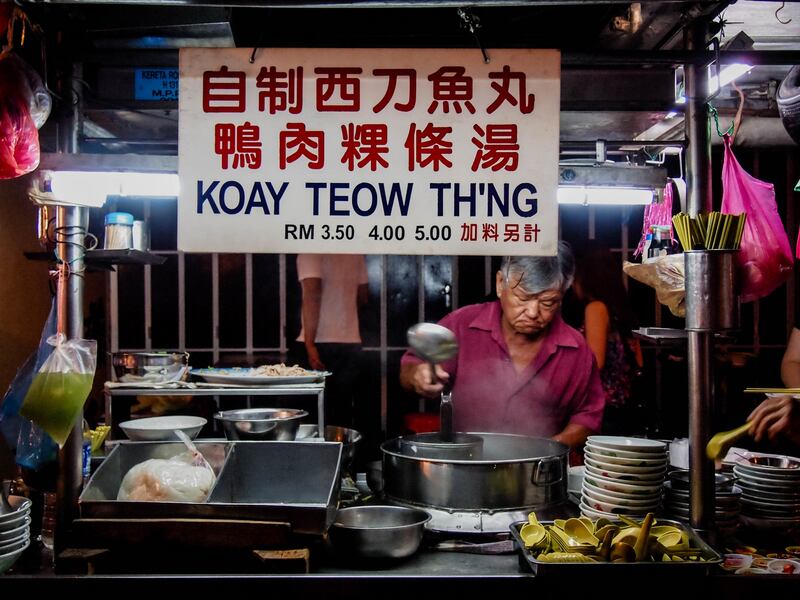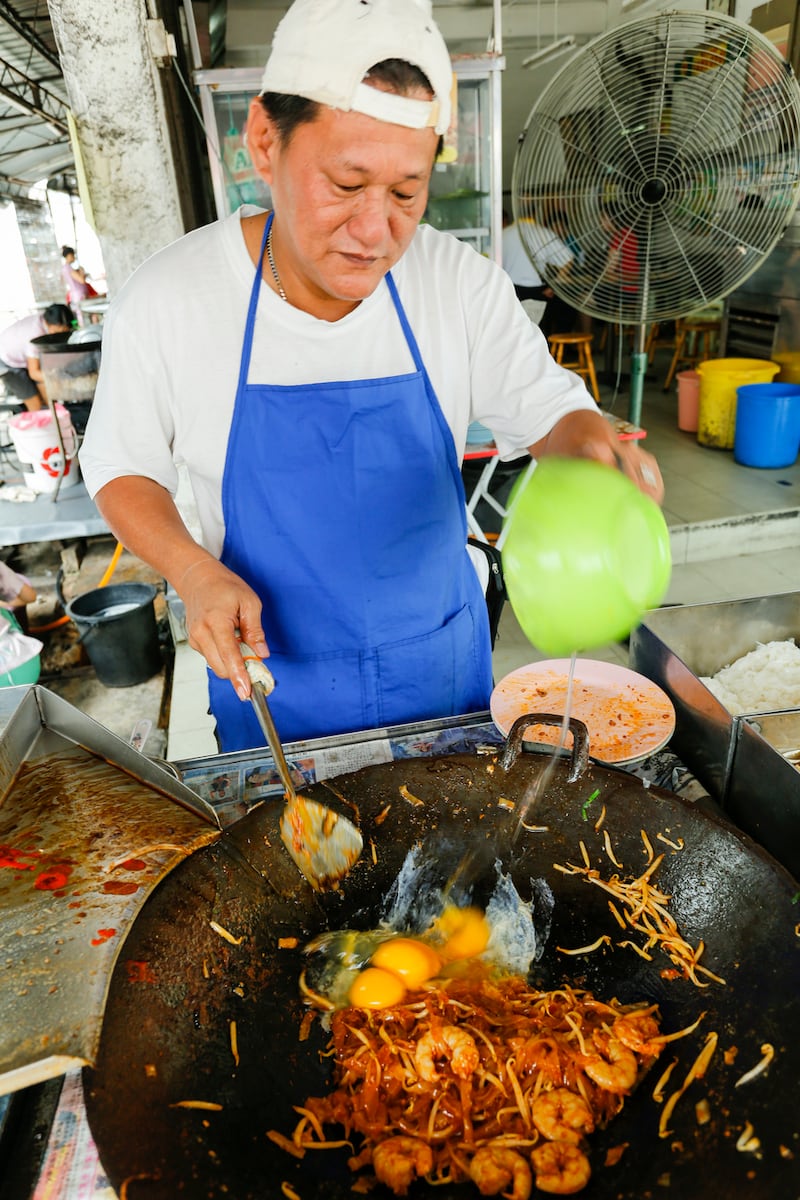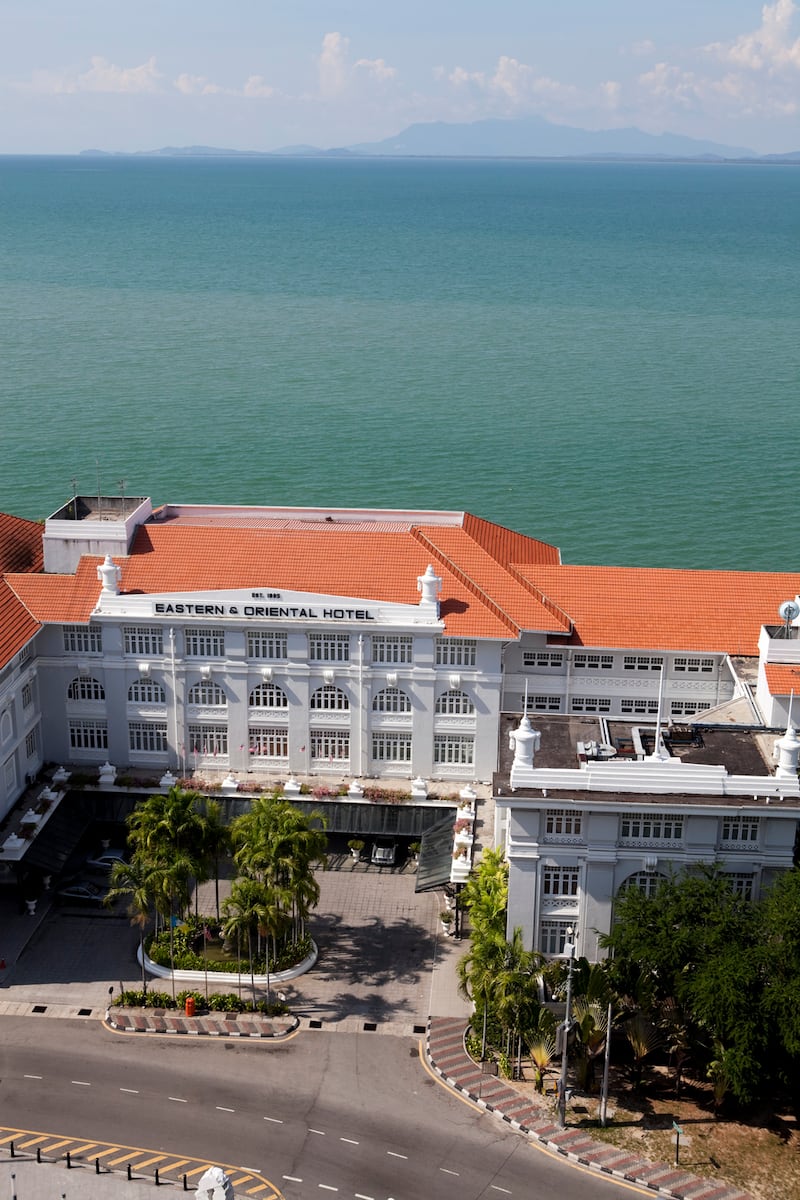Stand on a street corner at dinnertime in George Town, the Unesco world heritage site that is the capital of Penang island, close your eyes and inhale. As the tantalising aromas from the hawker stalls and street kitchens mingle in the humid air, you could be in any one of a number of countries in Asia.
Malaysian food is intriguing, a melting pot of flavours, ingredients and techniques reflecting the multi-ethnicity of its population, and nowhere is that more evident than in Penang. There are Chinese and Indian influences as well as Malay, and it can be confusing, at least initially.
Just ask MasterChef presenter Gregg Wallace, whose comments on a contestant's chicken rendang almost caused a diplomatic incident. "Who eats 'crispy' chicken rendang?" asked the then prime minster of Malaysia, Najib Razak, in the midst of the furore.
Rendang row aside, the language of Malaysian food can take a bit of getting used to. It helps, on a basic but useful level, to know that mee are noodles and nasi is rice. In Penang, char koay are words you’ll see often too, meaning stir-fry, and usually with the word teow added to signify seafood added to the smoky, wok-seasoned rice noodles and beansprouts, or kak, when it is made with rice and turnip cakes.
Satay needs no translation, and it is everywhere in Penang, the barbecued meat skewers served with peanut sauce, along with chopped cucumber and sliced red onion. Look for a vendor sending smoke clouds up from their stall, ensuring the skewers get a nice smoky finish on them.
More adventurous eaters will seek out succulent fried oyster omelettes; bowls of Penang assam laksa, a sour-spicy fish noodle soup; nasi kandar, the traditional late-night treat of rice served with several different Indian curries, all running into each other on a single plate; and cendol, the puzzling, to western palates, dessert of worm-like green rice flour jelly strands, shaved ice, coconut milk, red beans and palm sugar syrup.

The island, now easily reached via Qatar Airways flights from Dublin, via Doha, is regarded as Malaysia's food capital, and after two visits there within less than 12 months, it's an evaluation I fully endorse. Street food, food courts, markets, seafood shacks, smart restaurants, and a lively coffee culture – it's got it all.
To get a proper insight into the diversity and cultural origins of the amazing food you’ll enjoy in Penang, it is a good idea to begin your stay with a visit to the Wonderfood Museum on Lebuh Pantai in central George Town.
“It’s ridiculously cheesy, but possibly the most (accidentally?) insightful commentary on our attitude to food in the 21st century that I’ve come across,” wrote the friend who first suggested I visit.
She wasn’t wrong. I won’t spoil the surprise, but be prepared for large-scale, think giant, plastic reproductions of all sorts of food, from Malaysian specialities to a red-velvet-draped table adorned with the world’s most expensive foods, and photo ops galore, complete with dress-up props. It is a good place, however, to learn about the local Nyonya cuisine, which fuses Malay and Chinese flavours and techniques.
Best things to eat
George Town is a very walkable place, and it is only by exploring on foot that you’ll find the best things to eat, both on the street and indoors. Spotting the city’s famous street art and the many colourful temples, as you stroll, is a bonus.
Begin your day with the most delicious breakfast in the world, roti canai, at George Town's Little India, the area around Queen Street, Chulia Street and Market Street. Make sure the flaky flatbreads with their charred and blistered exterior are cooked to order, and dip them in a variety of mellow, fragrant curries.
Carnarvon and Campbell Streets are also a good place to explore the hawker stalls which set up around the Campbell Street wet market most mornings. This is also where you’ll find one of the city’s most popular restaurants, Tek Sen, where the must-order dish is the double-cooked roast pork, aka bacon candy. It is almost as famous as the queues the restaurant attracts. Eat it with rice, and a side order of stir-fried pea shoots or water spinach.
In the afternoon, there's nowhere better to take a break from the heat than China House, a stylishly restored building that is home to a coffee shop, restaurant, bar and exhibition spaces. On any day, you'll find more than 30 types of cake on offer in the coffee shop, but I was sidetracked by the ice cream fridge, keen to try the gula Melaka, or Malaysian palm sugar variety.

Dinner is eaten late in Penang, and once the temperature has dropped you’ll find night markets popping up all over the city, combining a chance to do a bit of souvenir shopping with a pick-and-mix dinner of street food favourites.
It is food only, no knickknacks, at New Lane Hawker Centre, where you’ll find about 50 food stalls setting up shop on both sides of the road as dusk falls. Everyone who visits Penang has a favourite version of char koay teow, and I found mine here. The rice noodles and beansprouts were smoky from the well-seasoned wok, and it was dotted with sweet prawns and tiny clams, seasoned with soy and chilli sauces and Chinese chives, and enriched with an egg. Perfection, in a bowl.
Things to do in Penang to work up an appetite
Visit The Habitat: This is an eco-tourism attraction located in the rainforest on Penang Hill, just 6km from George Town. There is a nature trail, tree-top walk, canopy walkways , amazing views, and the fun of the funicular ride up and down the hill. Book a guided walk to get the most out of the experience and to make sure you spot and identify the myriad wildlife and plantlife. See: thehabitat.my
Picnic on Monkey Beach: This beach, in Penang National Park, has no road access, so you will either have to hike in from the park entrance (3.5km) or hire a boat. The advantage of going by boat is that you will be able to stop off at another isolated beach within the park, Pantai Kerachut, where you'll find a turtle sanctuary and rain forest treks. Simple barbecue food and cold drinks are available on Monkey Beach. Local agents offer day tours, including transfers and food.
Explore Penang's Chinese connections: Visit the Peranakan Mansion, the Khoo Kongsi clan house, and take a trishaw ride to explore the clan jetties – rustic wooden houses built on piers over water – in George Town. Almost 40 per cent of Penang's population is of Chinese ethnicity, and the country's influence on the food, and the architecture, is visible everywhere you go in Penang.
Where to stay
Eastern & Oriental: The Eastern & Oriental Hotel is George Town's grandest address and was the choice of lodgings for Prince Charles and the Duchess of Cornwall when they visited the island last year. The all-suite hotel has two distinctly different styles of accommodation – a butler-serviced and very traditional Heritage Wing and a more bright and modern, though also colonial in style, Victory Annexe. Both have sea views and there is a pool in each wing. eohotels.com.

Hotel Jen: The Jen brand is a funky, modern, mid-range offering from Shangri-La Hotels. The George Town Jen is centrally located near the landmark Komtar tower. There is a shuttle service up to the Shangri-La Rasa Sayany Resort in the beach at Batu Feringgi. hoteljen.com/penang
Hotel Majestic: Kuala Lumpur is a short 50-minute flight or a scenic four-hour drive from Penang, and if you choose to take in the sights there, or opt to fly home from the capital, the Majestic is a top choice. There is an excellent spa, specialising in Malay massage, an open-kitchen buffet restaurant, Contago, and Colonial Cafe, where afternoon tea is the big draw. Rooms are stylish and spacious. majestickl.com
- Marie-Claire Digby travelled as a guest of Qatar Airways and Tourism Malaysia. Return flights from Dublin to Penang, via Doha start from €739 (economy) and €3,829 (business)




















